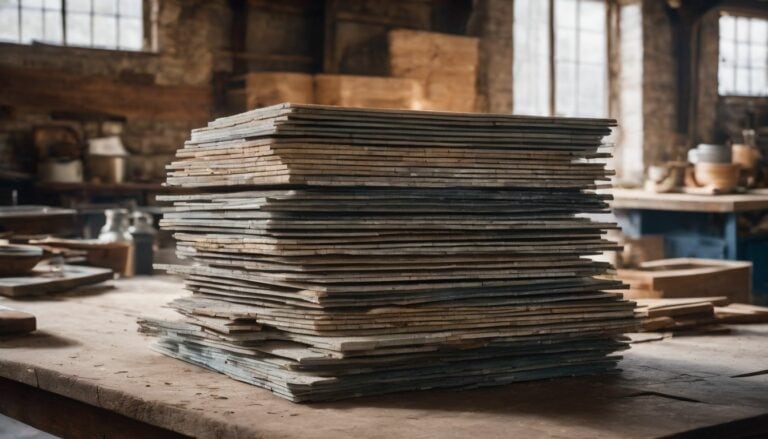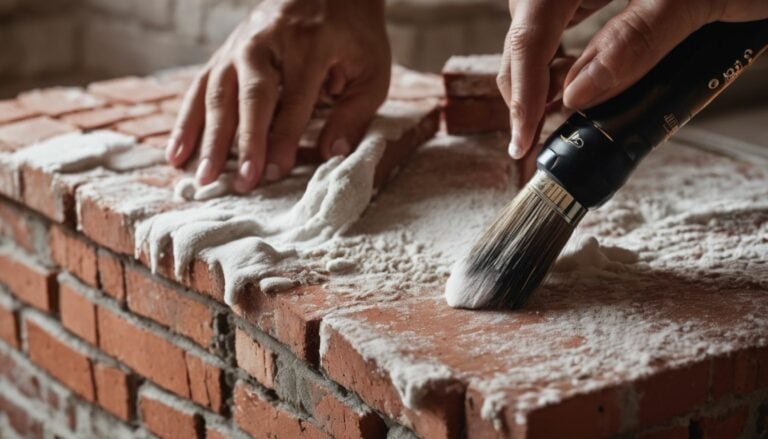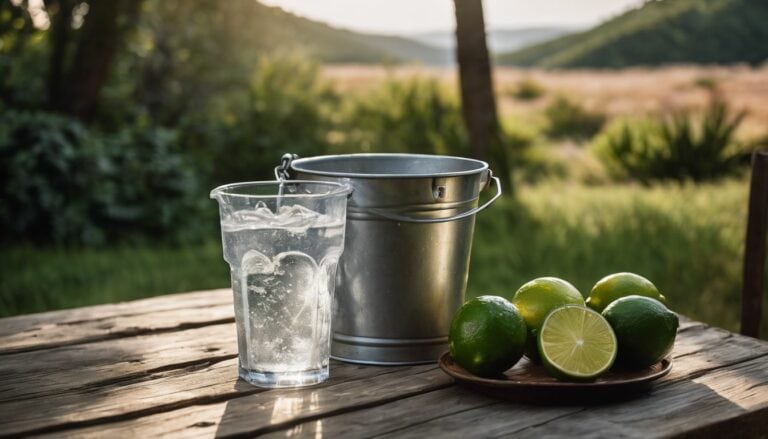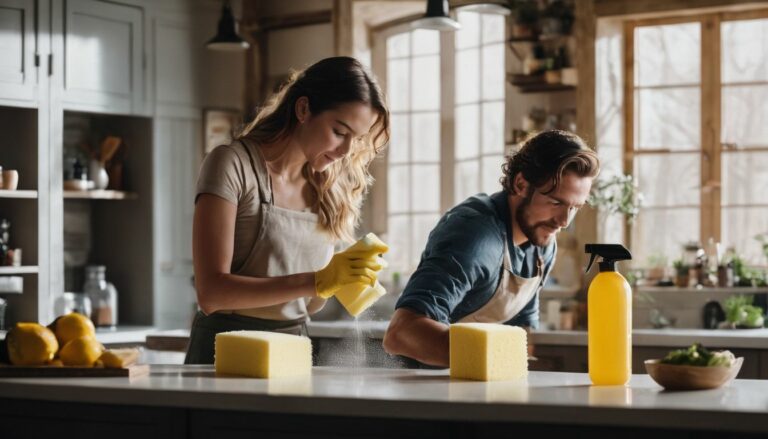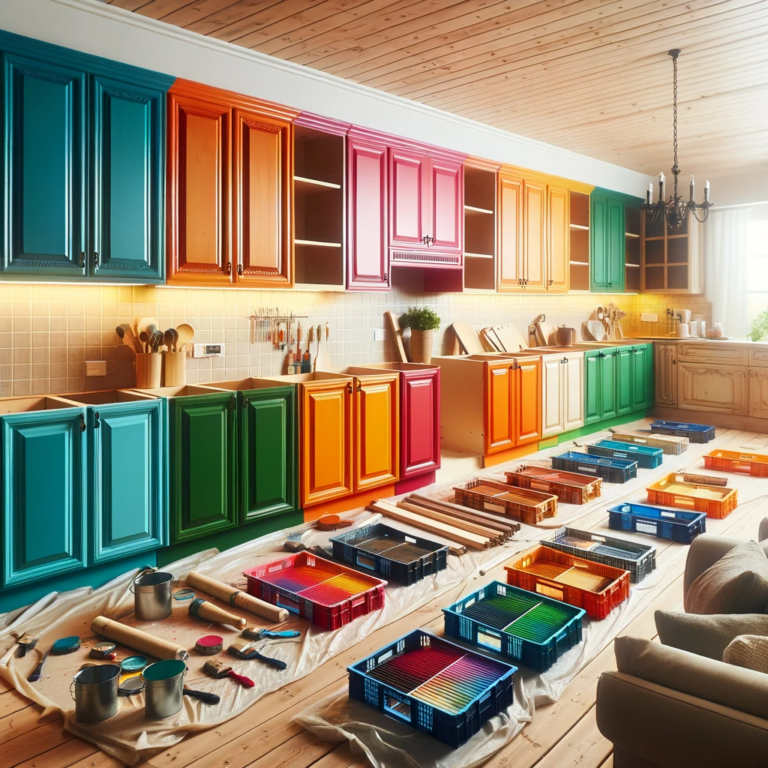Painting vs. Whitewashing: Which is Really Better for You?
Choosing the right finish for your home can be quite the puzzle, can’t it? You might have heard how whitewashing adds a rustic charm and wondered if it’s better than traditional painting.
This post will dive into the nitty-gritty of both techniques — from the translucent allure of whitewashed surfaces to the robust palette that comes with paint—offering you insights to make an informed choice.
Keep reading; we’re about to clear up this colorful conundrum!
Comparing Whitewashing and Painting
When it comes to giving your home a fresh look, deciding between whitewashing and painting can feel like navigating through a maze of options. Both have their unique benefits and can dramatically alter the appearance of your space. Let’s dive into a detailed comparison to help you make an informed decision.
| Whitewashing | Painting |
|---|---|
| Typically less expensive due to its simple composition of water, lime, and salt. | Can be more costly, considering the range of paints and finishes available. |
| Allows underlying textures to show through, creating a rustic, vintage look. | Provides a smooth, opaque finish, ideal for a modern aesthetic. |
| Eco-friendly with natural ingredients; lacks volatile organic compounds (VOCs). | May contain VOCs, depending on the type of paint; eco-friendly options are available. |
| Requires reapplication over time to maintain its brightness and protection. | Long-lasting; high-quality paints can withstand the elements for years. |
| Whitewash with salt helps to inhibit mold growth on the surface. | Specific paints are designed to resist mold and mildew as well. |
| A limited color palette – traditionally white but can be tinted with natural pigments. | Endless color options and finishes, from matte to high gloss. |
| Offers a breathable coating, making it suitable for historical or older homes with potential moisture issues. | Less permeable, which could trap moisture in certain types of masonry or wood. |
| Ideal for those aiming for a traditional or farmhouse style. | Better suited for contemporary designs and those seeking a specific color scheme. |
| Application can be somewhat messy, as the substance is thinner than paint. | Typically has a thicker consistency, which might mean a neater application process. |
| Some preparations of whitewash can be corrosive; proper handling and protection are necessary. | Most modern paints are non-toxic and safe for indoor use with minimal protective measures. |
With this comparison, envisioning how each option might play out on your walls becomes a bit clearer. Whether you lean towards the time-honored appeal of whitewashing or favor the versatility and durability of painting, your choice will set the tone for your space. Keep these pointers in mind, and you’re sure to create an environment that resonates with your style and home’s character.
Understanding Whitewashing
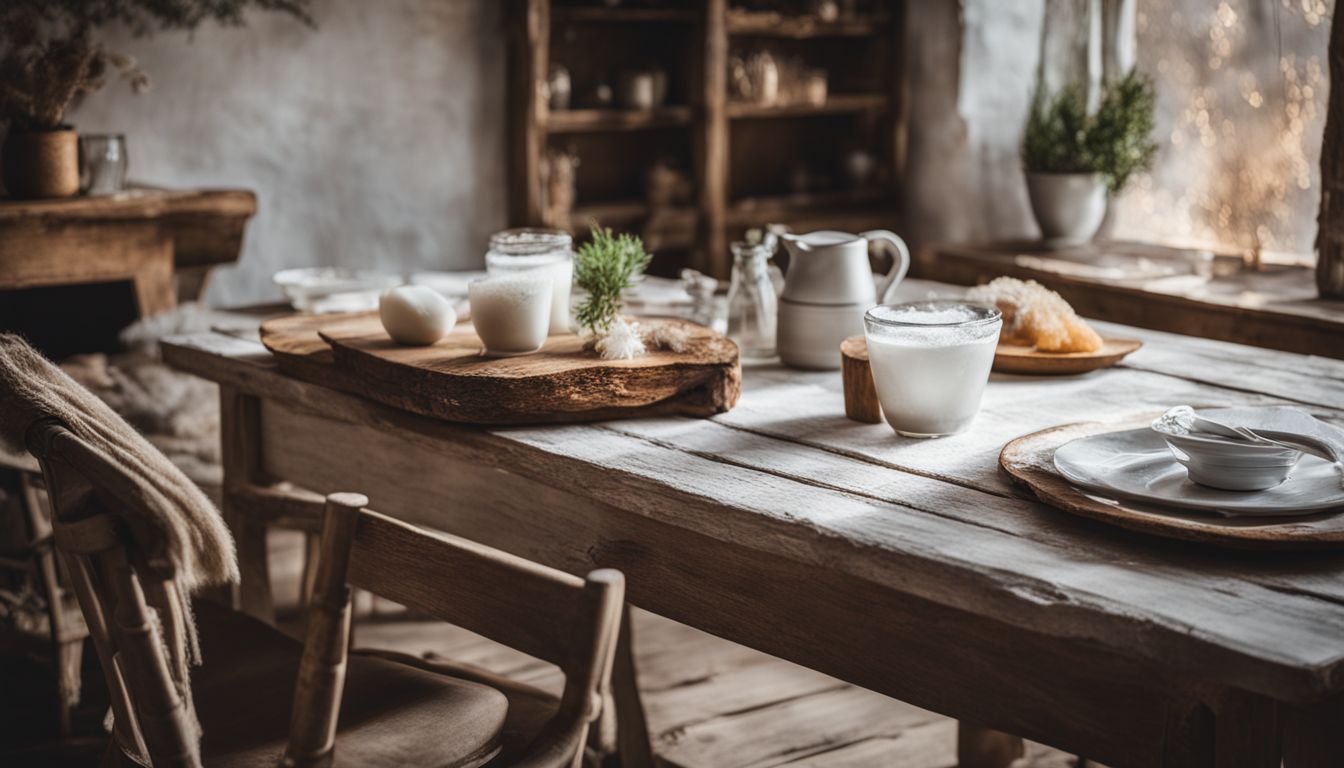
When it comes to transforming your space with a fresh, airy vibe, whitewashing stands out; it’s an age-old technique that delivers a charming rustic look while boasting its own unique set of benefits.
Delve into the world of whitewash, where the addition of salt plays a key role and discover how this translucent finish could be just what you’re looking for.
Pros and Cons of Whitewashing
Whitewashing has its own set of advantages and drawbacks like any other home improvement technique. Let’s dive into what makes it a unique choice for homeowners.
- Whitewash can be a budget – friendly option. You can mix any latex paint with water to create your own whitewash solution.
- It creates a brighter, smoother finish. With various color options, you can achieve the exact look you want.
- The process is DIY friendly. Even if you’re new to home projects, whitewashing is pretty straightforward to apply.
- Maintenance brings ease too; when the surface gets dirty, a quick wash can bring back its charm.
- For those seeking that rustic look, whitewash gives bricks a charming translucent finish without hiding their natural texture.
- Durability is not its strong suit. Unlike oil paint or water – based paint, whitewash tends to flake off over time.
- It requires more frequent touch – ups. Because it wears down more quickly, you’ll need to reapply it more often than regular paint.
- Whitewashed surfaces can be prone to efflorescence. This means salt can come through the material, leaving white streaks behind.
- Protection from elements isn’t as strong as painting. Against harsh weather conditions, traditional paint holds up better than whitewash.
- It doesn’t work well on all surfaces. Certain materials won’t take the mixture as effectively as others.
The Role of Salt in Whitewash
When it comes to transforming your space with a fresh, airy vibe, whitewashing stands out; it’s an age-old technique that delivers a charming rustic look while boasting its own unique set of benefits. It fights off bacteria and keeps mold away, giving your home’s white-washed surfaces a clean and healthy shield. Imagine adding just the right pinch of salt to your limewash mix – it’s like magic! The walls get tougher and can stand up better against the wear and tear of daily life.
People have trusted this simple salt trick for years because it works. A dash of salt mixed with lime wash makes the finish stay put longer, so you don’t have to redo it as often. Your curb appeal stays fresh, inviting friends inside without saying a word.
This is not only smart but also saves time and money in the long run.
Understanding Painting

3. Understanding Painting: Now, let’s dive into the colorful world of painting — a technique steeped in both tradition and innovation. From selecting the perfect shade to applying primer for that flawless finish, painting transforms spaces with a stroke of a brush..
Pros and Cons of Painting
Painting a surface can transform its look quickly and dramatically. Choosing the right paint can also protect surfaces from damage over time. Here are some pros and cons to consider if you’re thinking about painting.
- Variety of Colors: Paint comes in countless colors. You can pick the exact shade you want for your space.
- Quick Change: Painting lets you change a room’s look fast. With just a few coats, you can make a big impact.
- Protection: A good layer of paint protects walls from moisture and wear. It’s like a shield for your surfaces.
- Easy to Clean: Once painted, walls are easy to wipe down. A damp cloth can remove most marks.
- Primer Use: Primer helps paint stick better and last longer. It ensures an even color throughout.
- Maintenance Required: Painted surfaces need touch-ups over time. Colors fade and chips appear with wear.
- Can Trap Moisture: Some paints trap moisture in bricks or wood, which leads to damage.
- Prep Work Needed: Before painting, you must clean and prime the surface well. This takes time and effort.
- Costs Can Add Up: Good quality paint and primer can be pricey. The total cost includes supplies too.
- Hard to Remove: Once you paint brick or wood, it’s tough to get back to the original look.
Conclusion
Deciding between whitewashing and painting depends on your goals. Want a natural, breathable finish? Whitewash might be perfect for you. It lets the bricks’ texture shine through and holds up well outside.
But if bold color and a long-lasting coat matter more, go with paint. Only you can choose what’s best for your project – think about the look and feel you’re after!
FAQs
1. What’s the difference between whitewashing and painting brick?
Whitewashing, or limewashing, uses a mixture of lime, water, and salt to create a natural look on brick, while painting covers the bricks with a layer of paint for a solid color.
2. Can white wash protect my brick walls like paint does?
Yes! Whitewashed brick can breathe – this means moisture doesn’t get trapped. It’s great for protection against the weather without peeling like some painted surfaces might.
3. Why might someone choose white washing over painting their home?
Some folks love that classic, worn look you get from whitewash—it ages gently over time. Plus, it’s kinder to old bricks and easier to apply yourself if you’re hands-on!
4. Is there important information I should read about before choosing between white wash and paint?
Definitely check out terms of use and privacy info when buying products—know what’s in your whitewash or paint mix so you stay safe and satisfied with your choice.


